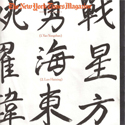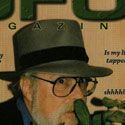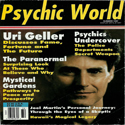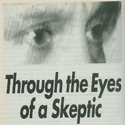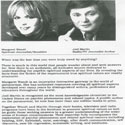

You will need to have Adobe Acrobat Reader installed to view the UFO articles. Download it from here.
Articles
Dreams and disaster happening at the same time.

Dr. Antonio de Nicolas' brother has just been elected the 30th Superior General of the Society of Jesus! History is made! Click here.
New superior urges Jesuits to strengthen service to poor. Click Here
Province Express - Father Adolfo Nicol�s. Click Here
- Is a New Eugenics Afoot? by Garland E. Allen
- The 1929 Arab Terror Attack: When Hebron Became Occupied Territory by Sammy Benoit
- "Saturn enters Libra"
- 'I am sorry,' Cardinal Mahony says amid new priest abuse details
- 04/07/08 We are all African
- 04/23/08 Moody's Blues
- 05/06/08 Lunacy and Freedom
- 05/10/08 It's not easy being Green, or even truthful it would seem
- 05/21/08 Shareholder Value
- 05/26/08 Senator Clinton, Fear, and Assassination
- 06/02/08 The Lesson Derived From Derivatives
- 06/12/08 The Price of Ice Cream
- 06/23/08 The Market
- 06/25/08 Getting Hit By A Bus
- 07/11/08 Being Right
- 07/18/08 Einstein
- 07/18/08 Karma
- 07/21/08 Ecology, Security and Economics
- 08/01/08 Who We Have Been Waiting For
- 08/11/08 From The Head To The Heart
- 08/20/08 Incarceration
- 08/28/08 Frick and Frack
- 09/10/08 Worrying
- 09/17/08 Taxpayer Bailout
- 10/16/08 Deleveraging
- 11/23/08 Too Big to Survive
- 11/24/08 Getting Hit By a Bus
- 2014: Sag New Moon --Change that perspective-NOW!
- 2024 Capricorn New Moon: Let's Get Your Cap On!
- 2nd Aquarius New Moon: 2015
- ACE OF CUPS
- ACE OF PENTACLES
- ACE-OF-SWORDS
- ACE-OF-WANDS
- After Lehman
- Amazing New Video -- The 2012 Enigma! by David Wilcock
- An Extraordinary Astrological Recapitulation by Brian McNaughton
- And now it is the Second Cancer New Moon!
- Aqaurius New Moon 2011--The New Quilting BEE!
- Aquarius New Moon 2010! It is a strange trip
- Aquarius New Moon 2012!
- Aquarius New Moon 2014 - You LikeMind me.
- Aquarius New Moon 2015 - The Zero One
- Aquarius New Moon 2016: Get Your Tribe On
- Aquarius New Moon 2017: Out of the chaos we find our Peeps.
- aquarius New Moon 2017: Out of the chaos we find our Peeps.
- Aquarius New Moon 2017: Out of The Chaos We Find our Peeps!!
- Aquarius New Moon 2018: Friends & Communities
- Aquarius New Moon 2019: No Time or Place for Emotions
- Aquarius New Moon 2020: Expect the Unexpected
- Aquarius New Moon 2021 Your Place in the Community
- Aquarius New Moon 2022: Loneliness or Circles? Your choice!
- Aquarius New Moon 2023: Wear Your Weird
- Aquarius New Moon 2024: Pluto is Getting Our Attention
- Aquarius New Moon 2025
- Aquarius New Moon--Unique Solutions if you are willing
- ARCHANGEL MICAHEL: SOUL'S JOURNEY
- ARCHANGEL MICHAEL: FAMILY AND FRIENDS
- Archangel Michael: INTENTIONS
- ARCHANGEL URIEL: STRESS
- Archangels: Stress
- Aries New Moon #1 March 2023
- Aries New Moon #2 - April 19th 2023 PDT
- Aries New Moon - It will be a great Treasure Map time!
- Aries New Moon 2009---IT’S A BIG ONE!
- Aries New Moon 2010--Let's get this party started!
- Aries New Moon 2012: You rule!
- Aries New Moon 2014 Get out of the way! Your Life is Coming
- Aries New Moon 2016: Light this rocket!
- Aries New Moon 2017
- Aries New Moon 2018: What Are Your Instincts Telling You?
- Aries New Moon 2019: Patience. Yes. That Word.
- Aries New Moon 2020: Survival
- Aries New Moon 2021: Heart Driven Changes
- Aries New Moon 2022: Finding Self Now!
- Aries New Moon 2024 Total Solar Eclipse - Wow.
- Aries New Moon 2025: A New Beginning for All
- Aries New Moon! (2008) by Tracy Cook
- Aries New Moon, 2011- Yes it is a big one!
- Article by Jock Brocas
- Back on Uncle Sam's Plantation
- Being Frugal and Benefiting
- Biomass-Eating Military Robot Is a Vegetarian, Company Says
- Bob Dylan: Like a Complete Unknown by Ron Radosh
- Books mentioned in Brian Hurst's broadcasts
- Britain Hired Astrologer to Fight Hitler
- Buddhism and the End of Economic Growth by John Stanley & David Loy
- Cancer Eclipse & New Moon 2019: Your Emotions Will Guide You
- Cancer New Moon & The Grand Cross
- Cancer New Moon --The Great Healing by Tracy Cook
- Cancer New Moon 2010---Your feelings have answers
- Cancer New Moon 2012 - "It's the flow, Baby!"
- Cancer New Moon 2014: REFRESH!
- Cancer New Moon 2016: Let It Flow
- Cancer New Moon 2017: Are your emotions flowing? Good.
- Cancer New Moon 2023: Ride the Rapids
- Cancer New Moon 2024: Emotions, Feelings and Needs- Oh, My!
- Cancer New Moon Solar Eclipse June 20, 2020
- Cancer New Moon--The first of two (2009)
- Cancer New Moon-Ready, Set, Emote! July, 14th 2007 by Tracy Cook
- Cancer New Moon: 2013
- Cancer New Moon: 2022 - Emotions Guide Us To Our Heart
- Cancer New Moon: Don't make me go find your roots...you do it!
- Cancer New Moon: Feelings. Emotions. Passion. 2021
- Cancer Solar Eclipse 2018
- Capricorn 2010 NEW MOON--Taking Care of Business!
- Capricorn 2011-Aim your ambition-NOW
- Capricorn New Moon - Get Serious!
- Capricorn New Moon 2011 -Be the authority and move up!
- Capricorn New Moon 2013: Pragmatic and no excuses
- Capricorn New Moon 2014
- Capricorn NEW MOON 2016 ...Get Real!
- Capricorn New Moon 2018
- Capricorn New Moon 2019 - Pragmatism Pragmatism Pragmatism
- Capricorn New Moon 2019: Focused and Disciplined
- Capricorn New Moon 2019: Focused and Disciplined
- Capricorn New Moon 2021. Climb Like a Goat
- Capricorn New Moon 2022: Climb Heights
- Capricorn New Moon 2025 Ambition for You
- Capricorn New Moon Dec 2022: CEO of Values
- Capricorn New Moon: Slow and sensible is a-okay.
- Children Skipping Childhood
- Clean your Slate Capricorn New Moon! by Tracy Cook
- Compliments Do You Get Enough Of Them?
- David Kaiser from MIT, not David Kaiser from the Naval War College
- Detach From Rescuing
- Did Yale prostitute itself for oil money? by Ethel C. Fenig
- Do I Remember Differently Than Another Does?
- Do you feel good about where you live? by Jill Saint James
- Dreaming on Pisces New Moon by Tracy Cook
- ECSTASY
- Energetic Health Food By Eva Sanchez,N.D.
- Face The Music
- Fox Blowviator Bill O'Reilly wants you to hate him
- GEMINI NEW MOON 2011 –“Can someone turn on the air, please?”
- Gemini Eclipse New Moon 2021: Fact versus Fiction and Pivot !
- Gemini New Moon (2012)- Second time's the charm
- Gemini New Moon 2009---The Fast and Furious Talker
- Gemini New Moon 2010: A Tornado among us!
- Gemini New Moon 2013
- Gemini New Moon 2014: The power of light feet
- Gemini New Moon 2014: The power of light feet
- Gemini New Moon 2018 - Thoughts!
- Gemini New Moon 2019: Mix it up & Adapt
- Gemini New Moon 2020: Reboot Your Inner Computer
- Gemini New Moon 2022: Process the Information
- Gemini New Moon 2023: Fuzzy Data But Still Informs
- Gemini New Moon 2024: Cha-Cha-Cha-ing
- Gemini New Moon by Tracy Cook
- Gemini New Moon-- Reach out! Mix it Up!
- Gemini New Moon--the first round- 2012
- Gemini New Moon. Mental Exercises 2015
- Gemini New Moon. Mental Exercises 2015
- Gemini New Moon: Question and Shift
- Gemini- New Moon 2008-- Ready to Connect! by Tracy Cook
- Get out of the way---LEO NEW MOON is HERE!
- Get your Viking on--Aries New Moon 2013
- Getting the Scoop by Janet Donovan
- Glossary of Number Values
- God + Faith by Margaret Wendt
- God Heard The Need
- Headaches are Telling You Something by Eva Sanchez, N.D.
- Heart Ethics by Way of Introduction by Dr. Antonio T. de Nicolas, PHD
- Hi Ho Silver!!
- History Unfolding by David Kaiser
- How American corporate philanthropies launched a national campaign of ethnic cleansing in the United States, helped found and fund the Nazi eugenics of Hitler and Mengele — and then created the modern movement of "human genetics." by Edwin Black
- How to sit with a medium
- I Forgot To Accept The Things I Can Not Change
- I Want Your Help, I’m An Atheist
- In a generation or two, the US will ask itself: "Who lost Europe?"
- In fallout from crisis, rethinking risk and human judgment by Lynnley Browning
- Incredible information and facts about the paranormal and publishing
- Is A Shift Needed in Parenting Values?
- Is Your Community Antisocial?
- It is all a balancing act, Baby! Libra new moon 2008
- Jess Stearn
- JFK Junior - John Jr. by Sloan Bella
- Jon Bennett Ramsey by Sloan Bella
- Keeping a Tally Sheet
- Kurt Cobain - Celebrity Channel by Sloan Bella
- Learn about Boundaries
- Lemon for Lymph By Eva Sanchez N.D.
- LEO 2008 New Moon--Sunny side of the street by Tracy Cook
- Leo New Moon - Round two & Solar Eclipse 2017
- Leo New Moon - The First One! 2017
- Leo New Moon - The First One! 2017
- Leo New Moon - To be bold or not to be bold? That is the question
- Leo New Moon 2011--Your passion tells you so
- Leo New Moon 2012--The Heart Wants To Thrive
- Leo New Moon 2013: Be Big. Be Very Big
- Leo New Moon 2015: Learn from the Lion!
- LEO NEW MOON 2016: Dare to find Joy & Strength
- Leo New Moon 2019: Be Special, dang it!
- Leo New Moon 2020: Put on Your Sloppy Cape
- Leo New Moon 2023 - 29 Days of Brave
- Leo New Moon 2024: Love, Strength and Courage
- Leo New Moon Eclipse 2018
- Leo New Moon: 2021 - Find Your Authentic Heart
- leo New Moon: 2021 - Find Your Authentic Heart
- Leo New Moon: 2022 - Be YOU.
- Leo's in the House..Roar! Sort of.. by Tracy Cook
- Libra New Moon (2007) by Tracy Cook
- Libra New Moon -How do you relate? Does it serve you?
- Libra New Moon 2009--The business of relating
- Libra New Moon 2012-
- Libra New Moon 2013 -- Balance That!
- Libra New Moon 2014: Let's really get our Libra on this time
- Libra New Moon 2015: Get your relationships straightened out
- Libra New Moon 2016: The Power of Negotiation
- Libra New Moon 2017: Not as light as you think
- Libra New Moon 2018: Power & Negotiations & Self Worth. Repeat.
- Libra New Moon 2019: Your Identity, My Identity & An Oxygen Mask
- Libra New Moon 2020: Bumpy. Power. Kindness. Repeat.
- Libra New Moon 2021: Where's your balance?
- Libra New Moon 2022 : How are your relating skills?
- Libra New Moon Eclipse 2023
- Libra New Moon Eclipse 2024: What's That Zagging?
- Look In My Eyes
- Love in the Land of Loneliness by Joseph Dispenza
- Marilyn Monroe - June 2004 - Celebrity Channel by Sloan Bella
- MAY GOD BLESS THIS AIRLINE CAPTAIN
- Me Controlling
- Meditation: The Making of Images By Antonio T. de Nicolas, PhD
- Mindy Sommers
- Mirror Mirror On The Wall
- My Global Warming Epiphany by Randall Hoven
- Narcissistic Behavior Is Increasing
- Neediness
- Nevins Rules by Julie Salamon
- New Moon in Aquarius 2013 Pull out your lightening rod-hits are coming
- New Moon in Virgo--Now you can fix your life
- New Moon Leo 2010--Wish upon a star--"Hey, that's me!"
- No One Mention The War!
- Pass The Buck
- Patience is a Virtue
- Pisces 2021 New Moon - All We Need is Love
- Pisces New Moon 2010--The LEAP of FAITH
- Pisces New Moon 2012: What is Dissolving?
- Pisces New Moon 2013 -Get in the flow
- Pisces New Moon 2014: Go for the Flow
- Pisces New Moon 2015
- Pisces New Moon 2016: Karma and Elevation
- Pisces New Moon 2017 -- The Big Release and Melt
- Pisces New Moon 2018: Intuition Speaks Are You Hearing It?
- Pisces New Moon 2019: Dazed and Confused --Thank You For It
- Pisces New Moon 2020: Time to Get Quiet
- Pisces New Moon 2022: Finding the Inner World
- Pisces New Moon 2023: Beep!
- Pisces New Moon 2024: Connecting to Bigger
- Pisces New Moon 2025: Unplug and Replenish
- Pisces New Moon---Mystics Apply
- Pisces New Moon--Dive or wash up on shore, it is your choice!
- Private Space Is Healing
- Psychic portraits of the Bangs Sisters
- Psychics, Mediums, and Rock N Roll
- Raymond Moody
- Re-wounding
- Re: Mars turns retrograde as Jupiter conjuncts Neptune on the Winter Solstice
- Re: Planetary Forecasting Methods for Traders
- Re: Saturn turns retrograde; Solar Eclipse; Mercury turns direct; Jupiter enters Pisces
- RESPOND TO RESPONSIBILTY-CAPRICORN NEW MOON 2008
- Responsibility Came From Being Told No
- Robert Monroe
- Sag New Moon 2010-- Ready, Aim---Change!
- Sag New Moon 2012 - A time to get real
- Sag New Moon 2021 Total Eclipse
- Sag New Moon 2023: Bits of Joy is still Joy
- Sag New Moon Total Eclipse 2020: The Truth is in The Mirror
- Sag New Moon---All Vision without the Hype!
- Sagittarius New Moon 2009--Ready, Aim, Adjust...Fire, Adjust, Aim, Ready..
- Sagittarius New Moon 2013 - Forward Ho!
- Sagittarius New Moon 2015: The Adventure!
- Sagittarius New Moon 2016: Get Wise Get Inspired
- Sagittarius New Moon 2017 - On Top of The Galactic Center
- Sagittarius New Moon 2018 - Get Inspired. Now!
- Sagittarius New Moon 2019: Hot & Cold Wisdom
- Sagittarius New Moon 2024: Finding The Way
- Sagittarius New Moon--Mother Knows Best
- Scorpio New Moon (2017) : Act Like a Plumber!!
- Scorpio New MOON 2009-Resources and Community--Where do I fit?
- Scorpio New Moon 2010-Jump in the water!
- Scorpio New moon 2012: Suit up and Commit
- Scorpio New Moon 2015
- Scorpio New Moon 2016: Release the death grip
- Scorpio New Moon 2018 - Rejuvenate!
- Scorpio New Moon 2019 - Shocked to Vulnerability
- Scorpio New Moon 2020: Dig Deep & Get Rid of Debris
- Scorpio New Moon 2023: Depth & Release
- Scorpio New Moon 2024: Tapping Power & Getting Unstuck
- Scorpio NEW MOON by Tracy Cook
- Scorpio New Moon Solar Eclipse SHED! SHED!SHED!
- Scorpio New Moon(2011)--DNA, Survival and ditching Garbage
- Scorpio New Moon: Get Your Plumbers Butt On!
- scorpio New Moon: Get your Plumbers Butt on!
- Scorpio New Moon: Solar Eclipse 2014
- scorpio New Moon: Solar Eclipse 2015
- Scorpio Solar Eclipse New Moon 2022: Release. Got it?
- Second Cancer New Moon 2020
- Sharia rejects all fundamental premises
- Speaking From Experience
- Speech by Lou Pritchett
- SURE RELATIONSHIPS BITE--BUT WE'RE ALL HUNGRY. Libra New Moon 2010
- Taurus New Moon 2008!
- Taurus New Moon 2010-----And so we begin.......
- Taurus New Moon 2011--Build upon it!
- TAURUS NEW MOON 2012 --What do you value?
- Taurus New Moon 2017: Practicality for a Personal Revolution
- Taurus New Moon 2018: Making Changes Bit by Bit
- Taurus New Moon 2019: Feel The Changes
- Taurus New Moon 2020: The rest of the year and being practical
- Taurus New Moon 2021. Slow down and find your values.
- Taurus New Moon 2022: Our Resources, our Love our Values!
- Taurus New Moon 2024: The Power of Slowing Down
- Taurus New Moon Eclipse: Yes you can make the changes!
- Taurus New Moon. Getting Practical ..Seriously, for real
- Taurus New Moon: May 19 The Glory of Practicality!
- Taurus New Moon: 2025 - Finding Stability In Extraordinary Times
- Taurus New Moon: Take the short route between A&B
- Taurus to the RESCUE!
- TaurusNewMoon 2014--Building Good bit by bit
- The Alinskyite's Big, Fat Governance Failure by Kyle-Anne Shiver
- The collapse of the U.S. Dollar and Federal Reserve? by Ted Phillips
- The coming collapse of the U.S. Dollar and Federal Reserve?
- The Consoling Angel by Antonio de Nicolas
- THE EMPEROR
- THE EMPRESS
- THE FOOL- MAJOR ARCANA
- The Ghosts on Moaning Mountain
- THE HEIROPHANT
- THE HIGH PRIESTESS
- The Horrifying American Roots of Nazi Eugenics by Edwin Black
- THE MAGICIAN- MAJOR ARCANA
- The Most Important Astrological Chart for Your Financial Security
- The Nightmare of Rationing in Oregon by Jeff Emanuel
- The Price of Ice Cream by Bill Sharon
- The Promise of the Past by Betty J. Kovács, Ph.D.
- The Reincarnation of Edgar Cayce and His Soul Group? - You Decide.
- The Sea has changed---SCORPIO NEW MOON 2008
- The Shadow and Karma
- The Spiritual Candle
- The Thieves of Happiness
- There she blows!!! SAG NEW MOON is HERE! by Tracy Cook
- Thomas Edison's Paranormal Personality by Margaret Wendt
- Thomas J. Curry must Leave Santa Barbara
- Tick Tock Virgo New Moon Strikes the Clock....2008
- Time To Connect With Like Minds
- Too Much Of A Good Thing....Is It Really Wonderful?
- Treasure Mapping by Tracy Cook
- Verbal Abuse Hurts
- Virgo 2018 New Moon - A Hero's Journey
- Virgo 2019 New Moon - A Car Full of Nerves
- Virgo New Moon - Your daily life is YOU. How is it going?
- VIRGO NEW MOON --GET YOUR MICRO ON!
- Virgo New Moon 2011- Help & Work serve you!
- Virgo New Moon 2012: Sweating the Small Stuff
- Virgo New Moon 2013: A Big Opportunity
- Virgo New Moon 2016 - What's that stuff in your schedule?
- Virgo New Moon 2017: Skills Needed! Please Apply
- Virgo New Moon 2021: Daily efforts build your life
- Virgo New Moon 2022: Don't be a burnt out Roomba
- Virgo New Moon 2023: Keep Your Head Down & Do The Work
- Virgo New Moon by Tracy Cook
- Virgo New Moon--Details Rule
- Virgo New Moon: 2020 - Every choice is yours
- Virgo New Moon: 2024 - Control Your Future By Your Schedule
- Vowels by Jill Saint James
- What Does Cutting Back On Expenses Mean To You?
- What Is A Distraction?
- What To Do This Taurus New Moon by Tracy Cook
- Where have all of the leaders gone? by Lee Iacocca
- Who Has Time To Read?
- You Feel Their Pain
- You had me at Hello, Aquarius New Moon by Tracy Cook
- You Lose Out When You Judge a Book by Its Cover
- You Make The Choice I Don't Care
- ‘Transce-end’ the trance – Bring out your dead!
- Uri Geller
- Margaret and Joel
- Houdini
Letters Sent to Us from the Public
- The 1929 Arab Terror Attack: When Hebron Became Occupied Territory by Sammy Benoit
- Biomass-Eating Military Robot Is a Vegetarian, Company Says
- Bob Dylan: Like a Complete Unknown by Ron Radosh
- Buddhism and the End of Economic Growth by John Stanley & David Loy
- David Kaiser from MIT, not David Kaiser from the Naval War College
- Did Yale prostitute itself for oil money? by Ethel C. Fenig
- History Unfolding by David Kaiser
- My Global Warming Epiphany by Randall Hoven
- The Alinskyite's Big, Fat Governance Failure by Kyle-Anne Shiver
- The collapse of the U.S. Dollar and Federal Reserve? by Ted Phillips
- The Nightmare of Rationing in Oregon by Jeff Emanuel
- Where have all of the leaders gone? by Lee Iacocca
Articles by Joel Martin
- Through the Eyes of a Skeptic
- Question and Answers
- Who Believes in the Paranormal?
- Nancy Reagan
- Ghost Ship
- I'm gonna get you 'suckers'
- Margaret Wendt and Joel Martin's New Book
Articles by Margaret Wendt
Paper Media: click thumb (where applicable) for full size image/.pdf files

Margaret's Magazine 1
Margaret's Magazine 2
Margaret's Magazine 3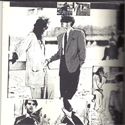
Margaret's Magazine 4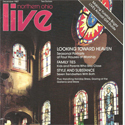
Margaret's Magazine 5
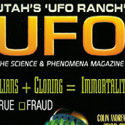
News Anchor's
UFO experience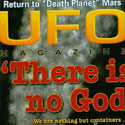
My Favorite Martian
Article by M. Wendt
Robert Urich
Spirit Magazine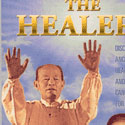
The Healers Magazine
Entertainment Tonight
Magazine for Cleveland
- News Anchor's UFO Experience by Margaret Wendt
- My Favorite Martian by Margaret Wendt
- Looking for Love by Margaret Wendt
- God + Faith by Margaret Wendt
- Thoms Edison's Paranormal Personality by Margaret Wendt
- Margaret and Joel
- Who was Hayim Solomon?
- Nevins Rules by Julie Salamon
- Psychic portraits of the Bangs Sisters
- Psychics, Mediums, and Rock N Roll
- The Ghosts on Moaning Mountain
- The Spiritual Candle
- Thomas Edison's Paranormal Personality by Margaret Wendt
- Margaret Wendt and Joel Martin's New Book
ECSTASY
An article in Newsweek
states that scientists have long known that epileptics often feel spiritual
ecstasy during seizures.(November l7,l997) It further identifies the region of
this ecstasy as the limbic region of the brain, home of emotions , religious
feelings and some seizures. We also know that those under the influence of
drugs claim similar ecstasy, not to mention the flora and fauna of pathological
events that also claim such ecstasy. How can we separate the two, the true
religious ecstasy from the induced one; the true mystical experience from the
pathological? And more to the point, is there any true description of mystical
ecstasy we can understand as a human event, namely, capable of being captured
by our own experience?
Pathologies leave
only claims and clinical records. Mystics, on the other hand, leave us
epistemologies. The mystic's experience can be retraced and is possibly
repeatable by others, and to a certain extent it can be taught.
Few mystics have
made a career of describing their ecstasies, and orthodox religions have been
even less candid in accepting them as the legitimate parcel of their religion,
but rather of the idiosyncrasy of the saint in question. In Christianity, for
example, there is no comparison in emphasis between the Transfiguration of
Christ, His ecstasy, and the Crucifixion. Nor is it in Paul, the so called
Apostle, where the ecstasy that converted him from persecuting Jews into a
leading Christian as he was felled from the horse is considered less important
than his Letters. We find similar examples in Hinduism and Buddhism where
experience, mystical experience, is promoted and encouraged. Yet the literature
on ecstasy is very skimpy. All we are told is that, yes, there are ecstasies.
Even Tantra, at least in written texts, is shy in describing ecstasy, and this
is the tradition that focuses on the epistemology of an experience of THAT,
that is not-I, without an agent but only a witness, and eternity is fashioned
on the model of the state of the lover just before the point of reaching
orgasm.
Individual mystic
writers, like those of the Upanishads, or more modern mystics like those of
sixteenth Century Christian
From the Rig
Veda:
"The sages,
searching in their own hearts with wisdom
Found in Non-Existence the kin of Existence." (l0.129)
"The
whole world is set in your substance,
within
the cave of the heart, within the ocean,
within
your life-span." ( 4.58).
The Katha
Upanishad:
"Realizing,
through the exercises of the yoga of the higher
Self, that primal
God, difficult to be seen, deeply hidden, resides
in the cave of the
heart. Hiding in the deep, the wise man
leaves behind both
joy and sorrow." (Valli Its., 12)
"When all the desires
lodged in one's heart are set free,
Then a mortal
becomes immortal"
"When all the
knots of the heart are cut off here on earth,
Then a mortal
becomes immortal!"
"There are a
hundred and one channels in the heart,
One of these passes
up to the crown of the head,
Going up by it, one
goes to immortality.
The others scatter
in various directions!"
"The measure
of a thumb is the size of the inner soul,
for ever seated in
the heart of creatures." ( Valli 6th,12-l7)
From the Philokalia:
"Whenever the
soul, paying no attention to external
things, is
concentrated in contemplation, then a kind of
flame surrounds it,
as fire surrounds iron, and makes it
wholly
incandescent. The soul remains the same, but can no
longer be touched,
just as red-hot iron cannot be touched
by the hand."
( Ilias the Presbyter, vol.3, Part II, para. l05)
From the Gathas:
"What you have
disclosed through Inner Fire,
What you have
promised through Asha,
the Divine Law for
the discerning Soul,
O Mazda, to us
clearly explain,
let the words come
from your mouth
to help us
transform all living men." ( Yasna 31-3)
From the Bhagavad
Gita:
"I am seated
in the hearts of all
From me are memory,
wisdom and their loss." (l5-l5)
"Undivided,
yet standing as if divided among beings,
as the destroyer
and producer of beings,
(I am) Light of
lights, beyond darkness,
(I am) knowledge,
what is to be known,
and the goal of
knowledge..
I am seated in the
heart of all." ( l3-l7)
It is in the Bhagavad
Gita where we witness the first personal account of an ecstasy by a human, as Arjuna is taken
up by the power of ecstasy:
"If in the
heavens
the light of a
thousand suns
would rise
together,
It would be like
the light of that Self." (ll-l2)
"I behold in your body, Oh God, all the gods,
and also crowds of
different beings...
and all the sages,
and celestial serpents." (ll-l5)
"I behold you,
O Lord and Form of all,
with many arms and
stomachs, mouths and eyes,
and see no end,
middle or beginning to You, O Lord." (ll-l6)
"The moon and
sun as your eyes,
your mouth a
glowing fire,
burning this
universe with your radiance." (ll-l9)
"Having seen
your great Form, with many mouths
And eyes, O
Strong-Armed,
With many arms and
thighs and feet,
With many bellies
and terrible tusks,
The worlds tremble
and so do I." (ll-23)
"You lick and devour
with flaming mouths
Entire worlds from
every side,
Your light-rays
scorch with radiance entire universes," (ll-30)
"Just as moths
with great speed
Enter the flaming
fire and perish there,
So also these
creatures enter your mouths
To meet destruction."
( ll-29).
"Tell me who
You are ..." (ll-31)
A modern Hindu,
Ramakrishna in l856, a young priest of only twenty years, outside
"There was an
unbearable pain in my heart because I couldn't get a vision of Mother (Kali)...
In my agony I said to myself:
"What's the use of living this life?" Suddenly my
eyes fell on the sword
that hangs in the
With the irruption
in the West of Sufi poetry and mysticism through the Sufis in
" Take one
step
away from
yourself--
behold!--the
Path!" ( Abu Sa' id Ibn-l-Khayr).
"The minute I
heard my first love story
I started looking
for you
Not knowing how
blind I was.
Lovers don't
finally meet somewhere.
They are in each
other all along" (Rumi)
"Oh Lord,
nourish me,
not with love
but with the desire
for love." (Ibn 'Arabi)
"True ecstasy
is the conjunction of light
with light, when
the soul of man meets the divine Light." ('Abdu'-Qadir Al-Gilani.)
"Love has come
and it flows like blood
beneath my skin
through my veins.
It has emptied me
of my self
and filled me with
the Beloved,
The Beloved has
penetrated every cell of my body,
Of myself there
remains only a name,
everything else is
Him." (Rumi)
Ignatius de
Loyola, soldier, sinner, founder of the Jesuits, Saint, came to the spiritual
life late in life and it all started with an ecstasy by the river Cardoner, as
he writes in his Diary of a Pilgrim:
"The road ran
next to the river. As he went along occupied with his devotions, he sat down
for a while with his face towards the river, that there ran deep. As he sat,
the eyes of his understanding began to open; not that he saw a vision, but he
came to know many things, matters spiritual and those pertaining to faith and
learning. This took place with such great clarity that everything appeared to
him to be something new. And it happened to enlighten his understanding in such
a manner that he thought of himself as if he were another man and that he had
an intellect different from the one he had before... He experienced a great
clarity in his understanding; so much so that in the whole course of his life,
through sixty two years, even if he put together all of the many gifts he had
had from God and all of the many things he knew and added them all together, he
does not think they would amount to as much as he had received on that one single
occasion." (Powers of Imagining,
l986.)
There are no more
memorable lines in poetry than those of the most famous poem of San Juan de la
Cruz, The Dark Night:
THE DARK NIGHT OF THE SOUL
On a dark night,
anxious, by love inflamed,
-O joyous chance--
I left not seen or discovered,
my house at last completely quiet.
In the darkness, with light,
by the secret ladder, disguised,
-O joyous chance-
I left in the darkness, covered,
my house at last complete quiet.
On that joyous night,
in secret, seen by no one,
nor with anything in sight,
I had no other light or mark,
than the one burning in my heart.
This light guided me
more directly than the midday sun,
where waiting for me
was the One I knew so well, my delight,
in a place with no one in sight.
O night, O guide!
O night more loving than the dawn!
O night that joined
lover with Beloved,
Beloved in the lover transformed!
Upon my flowering breasts,
that I had saved for him alone,
there he slept,
while I caressed his hair,
and the cedars' breeze gave us air.
As I spread his tresses,
the fresh wind from the turret,
wounds me in the neck as it presses
with its serene hand,
suspending all my senses with its caresses.
I lose myself, and remain
with my face on the Beloved inclined;
all has come to rest,
I abandon all my cares,
there, among the lilies, to die.
East or West,
male or female, no other writing on ecstasy is more personal, more didactic
than that of Teresa de Avila. For this writer of the sixteenth century prayer
of contemplation ends or begins in the fourth degree of prayer, prayer of
rapture and union where the whole complex of self-body-world is affected. Joy
is of great intensity, the soul and the body are drained of powers (Life,l8,l)
The spirit rises higher than ordinary and joins with love; the detachment from
creatures is deeper and more subtle, but these instances last a very short time
(Life, l8,l2). The whole body complex ceases to live by itself and lives
as if sensitized by someone else (Life, l8,l4). The spiritual raptures
of Teresa, as described by herself overcome the body too: "The natural
body heat fails the body, the body gradually grows cold, and there is no remedy
to avoid this." (Life,20,3) " For in the pain that is
experienced in these impulses, the body feels it along with the soul, and both
seem to have a share in it... The (soul) desires only to die in this
solitude." (Life,9) This suffering and this death, however, bear
along with it great happiness, or as Teresa says it: "It is arduous,
delightful martyrdom." (Life, 20, ll)
We are left
however with the one last question, what is an ecstasy?
What happens in it? She will tell us in the most daring and
sensuous terms:
"
I saw close to me an angel in bodily form... not very large, but small; very
beautiful, his face a flame, he must have been one of the highest angels...In
his hand I saw a golden dart, long, the tip red with fire. This dart entered my
heart many times and reached my insides; in drawing out the dart it seemed he
was taking my insides with it; he left me all inflamed in great love for God.
The pain was so deep that it made me moan; and it was so excessive the
sweetness this unbearable pain plunged me into, that there was no way for me to
stop, nor was the soul satisfied with any less than God himself. "( Life,29,l3)
A further
testimony of the transformation of the body through the ecstasy of these
mystics is the fact that in some of them their bodies did not decompose after
death, as in the cases of Teresa de Avila and Juan de la Cruz. But the most
universal testimony we are all able to see is the testimony of the communities
they left behind, and the testimony of their own body of writing that affects
us spiritually and, in more than one case, to the point of ecstasy.
REFERENCES
of works cited only.
Comfort, Alex I and That: Notes on the Biology of
Religion. Crown
Publishers. N.Y. l979.
de Nicolas, Antonio T. Meditations through the Rg Veda.
Nicolas-Hays,
The Bhagavad Gita. Nicolas-Hays,
Powers of Imagining: Ignatius de Loyola. SUNY
Press,
Isherwood,Christopher.Ramakrishna and his Disciples. Simon
and
Llewellyn Vaughan-Lee. Ed. Traveling the Path of Love. S
sayings of Sufi
Masters. The
Pearce, Joseph Chilton Evolution's End. Harper
Collins.
Pert, Candace B. Molecules of Emotion: Why you feel the
way you feel.
Henning, M.. Trans. The
Hymns of Zarathustra. Charles E. Tuttle Company
Inc,
Nikodimos and Makarios, Compilers. Trans. Palmer, Sherrard,
Ware, The Philokalia,
Vol. III,
Faber and Faber,
Hume, Robert Ernest, trans. The Thirteen Principal
UPANISHADS,
I
A VIGNET ON THE MOST FAMOUS ECSTASY
There is no
more famous representation in art of an ecstasy than the marble statue by
Bernini of St. Teresa de Avila's at the altar in Santa Maria della Vittoria in
We have tried to capture this moment and the steps that lead
to it in Teresa's life with a poem that briefly evokes, using her own words, as
we saw earlier in her Life, the ascent and the ecstasy of a woman that
increases the measure of her experience as the experience enlarges this
measure.
A WOMAN'S MEASURE
Remembering Teresa de
Avila
I measured my life
in thimbles of love
squeezing from memory
Sunday preachers
as I moved their images
about in my mind
at those times
when I was praying
to You.
Love of men
in a woman's measure.
You taught me later
to measure it in cups,
as You came to me
in portions of
sky,
water,
fields
quieting my soul
like a still pond
with memories of
fall
summer,
winter,
spring,
as I turned my soul
face up like a mirror.
Love of the world
in a woman's measure.
Finally You came upon me
to stop all measure
in the form of an angel
the body of a man
the face like a flame
carrying in your hand
a dart of gold
the tip burning red,
and You caressed
my heart with it
penetrated inside
would not let go
till my body
grew red with the fire
penetrating my heart...
The pain was so deep,
so soft,
it made me groan,
I heard myself moan
for the pain not to stop
but plunge me deeper
into that bottomless sea
where at last I could feel
the exact measure
of my woman's desires
for You.
Desire of the world,
love for men,
love of God
at last joined
within a woman's measure.
From Of Angels and Women, Mostly.
Paragon
House,
Dr. Antonio T. de Nicolas
Professor Emeritus of Philosophy
SUNY at Stony Brook
And
Director of the Bio-Cultural Research Institute in
ATTENTION!
It has been brought to our attention that Margaret is being portrayed as a psychic on $1.99 sites. These sites are doing so without Margaret's permission. Margaret has not claimed she is a psychic. - MW








